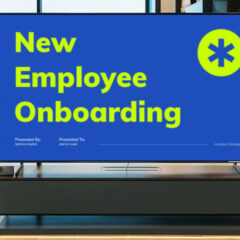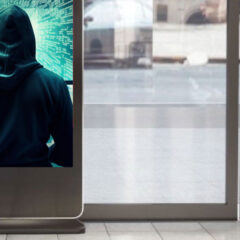3 Tips for Developing a Digital Menu Board Strategy

Digital menu boards enable quick-service restaurants to boost sales and improve the customer experience through more relevant and targeted content. Unlike traditional printed menu boards, digital signage can be easily updated with new menu items, price changes and time-sensitive promotions and discounts.
The benefits don’t stop there, however. QSRs are increasingly leveraging digital platforms to capture customer data and apply analytics and artificial intelligence to gain deeper insights into the entire operation. These data-driven insights can be used to improve menu, pricing and staffing decisions, boost customer loyalty, enable targeted marketing, create upsell opportunities and evaluate operational efficiency.
As with any technology initiative, companies should have a well-developed strategy with clearly defined objectives before investing in digital menu boards and the technology required to support them. Here are three recommendations for developing your strategy:
1) Understand the benefits you wish to achieve
If you just want to cut costs, digital menu boards might not be your best investment — outdoor digital signage is more expensive than basic printed menu boards. However, if you have multiple stores and want the ability to change menus frequently to reflect daily and seasonal specials, digital menus offer an excellent return on investment.
According to a Forrester Total Economic Impact (TEI) study, multisite QSRs can save $30,000 in printing costs per year per location while eliminating the labor expenses associated with updating printed menus. Additionally, digital boards can increase the average value of orders by 2.5 percent, and the conversion rate on promotional items by 2 percent.
2) Develop a data capture and reporting strategy
Capturing customer data is great, but only if you can manage, filter, analyze and use it. Without that infrastructure in place, data stores can quickly grow out of control, becoming incredibly difficult to use and understand. That’s why it is important to identify in advance the specific business cases you wish to address, which will help you understand the types of data you wish to capture and the custom reports you need to evaluate that data.
Many off-the-shelf data reporting tools lack the ability to integrate data from multiple sources such as point-of-sale, customer loyalty, online ordering, and kitchen inventory systems. You should have a reporting solution that can pull data from all sources to report on overall sales, top-selling items, promotional and seasonal sales, gift cards and rewards. You’ll also want a solution that can display data with simple visualizations.
3) Create a design and content strategy
Frequent updating is one of the main benefits of digital menu boards. If you never change the look or the content, it’s just an expensive version of a static printed board. Without engaging, current and relevant content, your displays won’t make much of an impact on customers. Organizations should consider forming a content creation team to produce up-to-date content that will have an impact on customers.
You also need a content management system to program and update menu boards remotely. This gives you the flexibility to add or remove menu items and adjust prices as needed. You may also want to use video to showcase specials or introduce new products. Content management systems also enable automatic dayparting for changing menu items based on the time of day. Menu boards can even be integrated with inventory and point-of-sale systems to discount slow-moving items and remove out-of-stock items from the menu.
Digital menu boards are effective marketing and sales communication tools that drive revenues and enhance the customer experience. However, they require comprehensive planning, a clear strategy and effective management to deliver expected benefits. Very often, organizations find the technology requirements are too advanced for their in-house staff.
Consider working with a signage expert such as SageNet to evaluate signage technology, develop a clear business case and guide you through the purchase and implementation process. Call us to set up a consultation.
More Insights
-
 Digital Experiences, SageVIEW Approach
Digital Experiences, SageVIEW ApproachHow Digital Signage Boosts Workforce Productivity
-
 Digital Experiences
Digital ExperiencesHow Digital Signage Can Play a Role in Reducing Workplace Stress
-
 Digital Experiences
Digital Experiences7 Steps for Upgrading and Enhancing a Digital Signage Network
-
 Digital Experiences
Digital ExperiencesWhy You Should Make Digital Signage Security a High Priority
